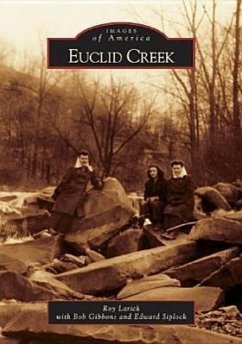Over the centuries, Euclid Creek's torrents have drilled through bluestone and shale, carving deep gorges in a gentle landscape. Modes of transport have always guided human life in the watershed. Early Native Americans trekked the creek's gorge rims to form an extensive trail network. In 1796, Moses Cleaveland's survey crew named "the big crick" Euclid, in honor of the inventor of survey mathematics. As early settlers arrived, they turned the Indian trails into county roads and used the creek to power saw and grist mills. By the 1850s, steam railroads took Euclid Creek wine and bluestone to distant markets. In 1896, electrified rails gave impetus for summer resorts and country estates. By 1920, automobiles were ferrying suburbanites to Tudor side streets. Now, Interstate highways funnel exurbanites into shopping centers. Framed in the history of transport, Euclid Creek tells the story of this Great Lake tributary stream and her many different communities. Euclid Creek is a unique history of the Great Lake tributary stream and her many different communities. Drawing from numerous archives, the authors surmount municipal boundaries to show the whole history of a nearly forgotten natural landmark.
Bitte wählen Sie Ihr Anliegen aus.
Rechnungen
Retourenschein anfordern
Bestellstatus
Storno

